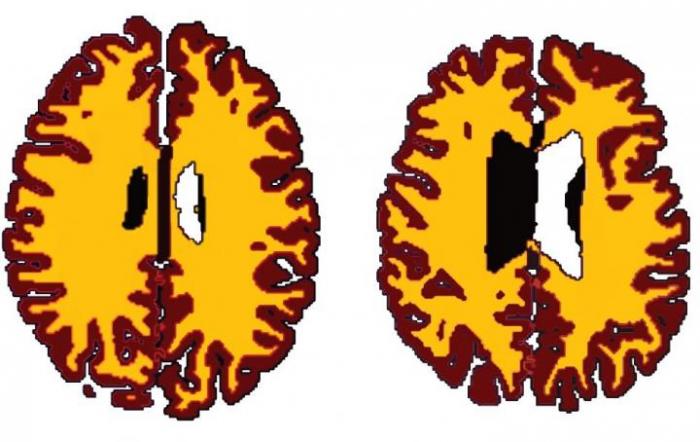 The evolutionary discordance model states that many of the chronic diseases and health disorders that plague us today are caused by a mismatch between our current environment, which differs substantially from ancestral environments, and the human genome, which is built up of genes that were selected in past environments. This model is extremely useful, in the sense that it helps us understand what the causes and solutions of the diseases of civilization are and what we can do to normalize our gene expression.
The evolutionary discordance model states that many of the chronic diseases and health disorders that plague us today are caused by a mismatch between our current environment, which differs substantially from ancestral environments, and the human genome, which is built up of genes that were selected in past environments. This model is extremely useful, in the sense that it helps us understand what the causes and solutions of the diseases of civilization are and what we can do to normalize our gene expression.
What has become increasingly clear over the past decade is that it’s not just the environment we can see with our naked eyes that has changed dramatically over the last 10.000 years (in particular the past two centuries), and hence, may be incompatible with the human genome (which in comparison has changed relatively little over the same time period); but also the invisible, microbial world in which we find ourselves.
There is evidence to show that a large proportion of the diseases of civilization, particularly those associated with chronic-low grade inflammation, are caused, in part, by a misfit between the human genome and the microbial environment, including the human microbiome, which is a part of the larger microbial world (1, 2, 3, 4, 5).
To understand how and why this genome-microbiome discordance occurred, we have to go back in time and travel the evolutionary road that our ancestors walked upon. Those who are into the whole ancestral health thing are undoubtedly familar with this road, but those who are not may not be.
Old bodies, new microbiomes
The human body was sculpted over millions of years of evolution. The best available evidence suggests that our genus, Homo, emerged about 2.8 million years ago, while our species, Homo sapiens sapiens, first came onto the scene 200.000 years ago, in Africa. Some 100.000+ years after that, our ancestors started migrating out of Africa and into new habitats across the world.
A hunter-gatherer lifestyle was the norm for our ancestors throughout the majority of the evolutionary history of our genus. It wasn’t until about 10.000 years, as agriculture started sweeping the globe, that the hunter-gatherer lifestyle went out of fashion and humans started to settle down in larger communities. The changes in diet and lifestyle that accompanied this epidemiological transition occurred because our ancestors went in and changed their milieu in unprecedented ways.
In the years that have passed since then, cultural evolution has vastly outpaced biological evolution. We’ve built large cities, the food system has changed completely, and new and evolutionarily novel technological devices, drugs, and food products have been developed. The most dramatic changes occurred following the Industrial Revolution some 250 years ago.
Many of these novel components of our environment are foreign to the human body, in the sense that there hasn’t been sufficient time or selection pressure for natural selection to prepare the human genome for the new stimuli that’s forced upon it. As a result, a suboptimal gene expression pattern, inflammation, and diseases of civilization arise.
Many of these adverse effects can be attributed to recent changes in the human microbiome. Recently, thhis second genome in our body has encountered forces that have changed its configuration and stability in profound ways. Antibiotics and other prescription drugs, evolutionarily novel foods, mold-contaminated buildings, and many other factors have produced microbiomes that are markedly different from those our primal ancestors harboured.
The basic anatomy and physiology of the modern human is very similar to that of our Upper Paleolithic ancestors; however, the environment in which this structure resides has changed substantially. The microbiome that is produced by a western-style diet and lifestyle is incompatible with the human genome, which in contrast to the microbiome has not changed much over the past couple of centuries.
When compared to industrialized people, hunter-gatherers and non-westernized, traditional people house a greater number of microbial species in their guts and carry microbiotas that are better matched with the human genetic make-up (6, 7, 8). The microbiotas of our fiber-eating ancestors pumped out short-chain fatty acids, which bind to G protein-coupled receptors expressed in gut epithelium and immune cells; interactions that are important for maintaining homeostasis in the gut and other organs.
The guts of most modern humans, on the other hand, receive little influx of dietary fiber, and hence, the colonic microbiota doesn’t get the substrates it needs to flourish. By itself, this sets the stage for immune dysregulation and disease. If it’s combined with other microbiota-disrupting stimuli, such as the use of antibiotics, devastating health consequences may occur.
A human body that hosts a microbiome that is mismatched with its genome is an unhealthy body. A dysbiotic microbiota, which in my mind is a microbiota that is so different from the types of microbiotas that co-evolved with our ancient ancestors that it induces abnormal, disease-promoting gene expression in its host, can disrupt our hormone levels, immunity, and reproductive function.
Mending the relationship
A lot of people are unaware of the fact that many of the recent changes in the visible environment around us have wreaked havoc on our health. This negligence largely came to be because principles of evolutionary biology and ancestral health are foreign to most people and have yet to make their way into the curriculum of medical schools.
We’ve been even more neglectful when it comes to how the changes in the invisible world around us – and in us – have affected our health. Fortunately, this is now changing, and it’s becoming increasingly recognized that the microbiome has to be included in the discussion of genome-environment interactions.
I think the key here is to understand that in order to resolve the conflict that exists between the human genome and our modern microbiomes, we have to change how we think about health and medicine. The conventional medical approach of using pharmaceutical drugs to treat disease will not get us very far in terms of mending the damaged relationship between the human and microbial parts of our body. Rather, we have to adopt an evolutionary approach to medicine, and acknowledge that pretty much everything we do affects the microbiome in some way.
Picture: Designed by Freepik.



